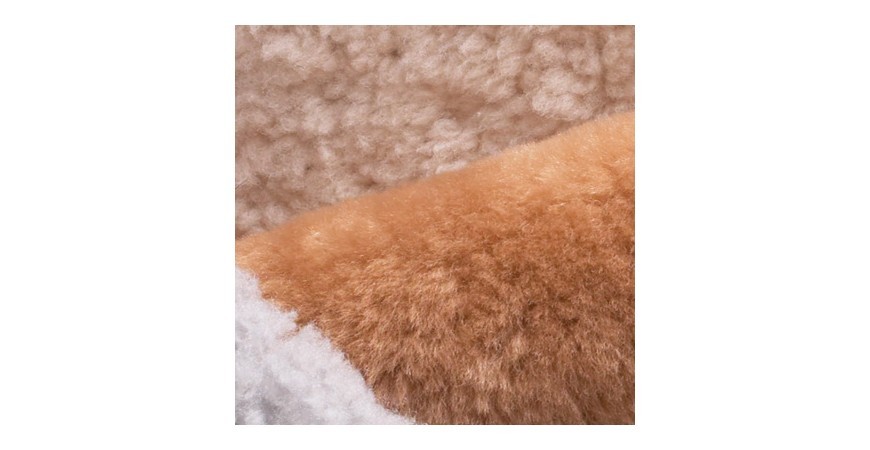Sheepskin Types
When looking to purchase any type of sheepskin, also referred to as lambskin it is useful to understand the different types of sheepskin that are available. Lambskin can be described in a variety of ways, including being short haired or long haired. Lamb fur can also have a wavy or curly pattern to it and come in a wide range of colors. This allows for each type of lambskin to have its own distinct set of characteristics.
Mongolian Lambskin
- This type of lamb is made up of long, wavy, and silky hair.
- Particularly attractive in coats and jackets this particular type is left to its natural off-white color or is bleached white.
- With this type of fur special care is needed in wet weather as it can turn frizzy if not properly cared for.
Mouton Lambskin
- Mouton lamb is sheared sheepskin. The hair for this fur is treated and straightened to be made into a soft, water-repellent fur that can be dyed black or brown.
- This is done to imitate Alaska or northern fur seal or beaver.
- While this fur can be dyed other colors as well the natural color is typically off-white.
Shearling Sheepskin
- Shearling is natural sheepskin that has been sheared, similar to that of moutan lambskin, while the leather side has been sueded to give it a more complete look.
- As shearling is a natural material it will keep you warm in the winter and cool in the summer.
- The natural fibers within shearling act as insulator, while the hollow fibers easily absorb moisture allowing you to stay dry during those wet, rainy days.
- Being made of strong material it can last for many years providing the proper care is completed, in order keep the sueded side soft and clean and the lamb side from matting.
- Just a couple of years ago shearling was considered to be a heavy material, however with the introduction of better tanning methods the material has become lighter.
- Due to these better tanning methods we have seen its emergence onto the fashion scene.
- Shearling is used in a variety of products ranging from slippers, hats, and gloves.
- The use of shearling sheepskin is vast and will only continue to grow.
Persian Lambwool
- Persian lamb is also referred to as karakul, or carakul. It is formally known as astrakhan. The sheep are raised for meat and wool in Russia, and surrounding countries in the Central Asia region.
- Persian lamb is also raised in Namibia, where it is trademarked as Swakara.
- The difference in age allows for the fur to develop from the moiré pattern to a tight, close curl allowing for a distinctive look.
- Persian lamb goes in and out of fashion in the United States but has been consistently one of the most popular furs in Europe, notably in Germany.
- The best wearing Persian lambs are whites, grays and natural browns.
- Black Persian lamb is dyed to eliminate the whiteness of the natural leather from showing through the curls.
- Thanks to better breeding processes Persian lamb today comes in a variety of natural colors and is lighter in weight than even a couple of years ago.
Tibetan Lamb
- Originating in the Chinese provinces of Shansi, Shensi and Hopeh, the Tibetan lamb is similar to the Mongolian lambswool.
- Tibetan lamb is soft and can be up to four inches in length and has a slight curl to it.
- It differs from the Mongolian lamb as it is silkier and frizzier in texture.
- Tibetan lamb can be dyed a variety of colors although its natural color is off-white.
- Tibetan fur requires special care to prevent it from frizzing horribly, but can be straightened if needed, similar to Mongolian lambswool.


.webp)
.webp)
.webp)
